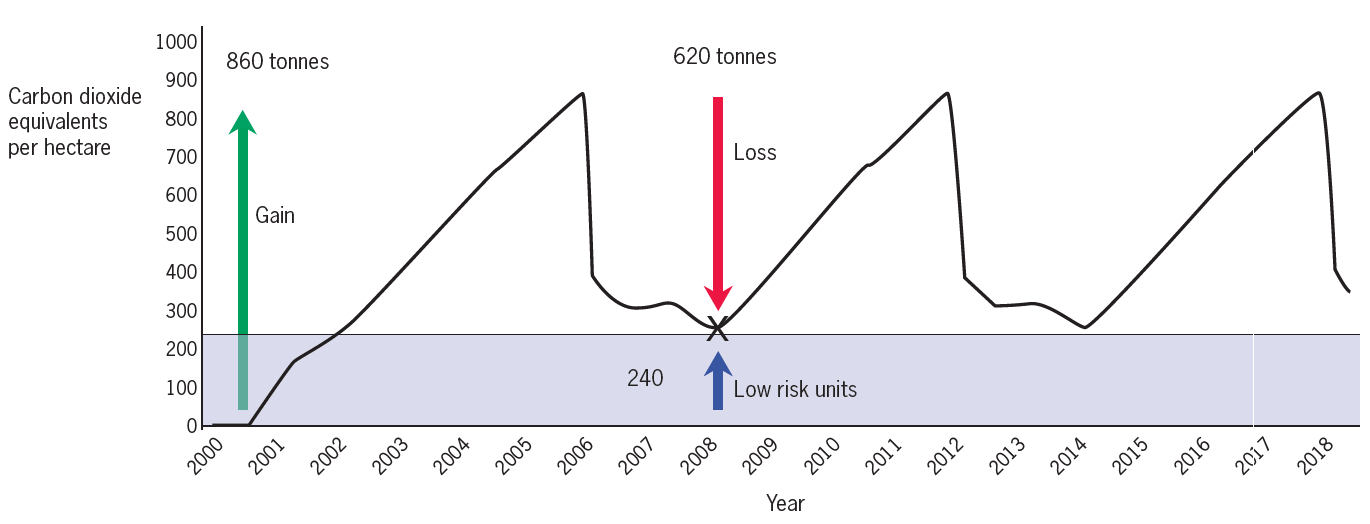Deadlines for the Emissions Trading Scheme and safe carbon
Stuart Orme, New Zealand Tree Grower May 2015.
Growers with forests still in the ETS need to be aware of a couple of deadlines coming up. One is the voluntary emissions returns for 2014 and the other is about the Kyoto units.
Voluntary emissions returns
The deadline for submitting emissions returns to the Ministry for Primary Industries for the 2014 calendar year is 30 June 2015. These returns are voluntary, so unless you need to know the carbon balance of your forest, or need the New Zealand units to trade in the short term, you can save administration time and costs, and delay making an emissions return.
Growers must submit an accumulated emissions return at the end of each five-year commitment period if they want to claim their carbon. The current commitment period runs to the end of 2017.
Kyoto units become redundant
If you still hold Kyoto units or ERUs your options for using or selling them are rapidly becoming very limited. Until 31 March there was an option to use Kyoto units to cover deforestation liabilities for trees harvested in 2014 or earlier. The guidance from MPI and our advice has been that a deforestation return relating to harvesting in 2014 or earlier needed to have been submitted by 31 March 2015 if to be certain of being able to surrender Kyoto units. Processing time is required for these returns.
MPI also advised that after 31 March any notification will be considered a ‘late application’ by them, with no guarantee that it would be processed before the 31 May deadline. The latest Sustainable Forestry Bulletin says −
From 31st May 2015, all New Zealand ETS emissions obligations must be paid using New Zealand Units (NZUs). For forestry participants this means forestry activity in 2015 which results in emissions obligations must be paid for with NZUs in 2016. For example, if you deforest pre-1990 forest land in 2015 you must submit an emissions return, and thus pay the obligations with NZUs, in 2016.
For forest owners still holding Kyoto units from now on, these can no longer be used for any other transaction related to your forest, apart from a deforestation liability described above. However, you may want to try and sell them. At the time of writing in April their value is only around 0.25 cents, and finding a market may be difficult. In contrast, NZUs have increased in value and in April were trading at around $6.45, which is the highest they have been for some time.
Is there safe carbon?
We are beginning to learn about the implications in ETS terms of harvesting forests planted after 1989 and replanting them. Many growers may have a vague notion that their carbon liabilities at harvest will in fact be less than the total amount of carbon they have claimed in their emissions returns up to harvest. There is some ‘safe’ carbon left in the branches and roots which stay on site after harvest.
Our recent experience is that the residual carbon calculation is quite complex and there are two types of carbon to be considered in the equation – residual and enduring carbon. A further complicating factor relates to the planting date of the forest because carbon accounting only began in 2008, the start of the first Kyoto Commitment Period. The older the trees were in 2008, the less safe carbon you will have.
The main points are −
- During harvest, not all wood or stored carbon is removed from the site. After harvest there is a certain portion of left-over carbon remaining on or in the ground in the form of stumps, branches and other timber not removed. This residual carbon is slowly released as the wood rots and needs to be accounted for using the MPI residual tables
- At the same time as the residual remains are rotting, the newly planted second-rotation forest grows and starts to store carbon
- These two carbon figures must be combined to calculate the total carbon on the forest land for any one year on the emissions return.
The point where the first rotation's decreasing carbon line crosses the second rotation's growth increasing carbon line represents the minimum total carbon for the forest stand.

This is where the planting date of the forest becomes important. If an ETS participant has received a high proportion of the stand’s total carbon because the forest was planted close to, or after 2008 and entered it in the ETS right from its planting date, that participant is not required to surrender the carbon below the minimum total of the land at harvest.
Forests planted in the 1990s have no safe or enduring carbon. Trees planted between 2000 and 2008 have increasing amount of enduring carbon the nearer to 2008 they were planted. There is no safe or ‘enduring’ carbon in second or later rotations. Enduring› carbon is only available while the forest remains standing and while it remains in the ETS. These units must still be surrendered if there is a change of land use, or if it is removed from the ETS.
In terms of practical implications for growers, most trees being harvested at the moment were planted in the early 1990s. There is no safe carbon in these stands, and growers will be liable for the total volume of carbon claimed in emissions returns up until the harvest date.
Stuart Orme ofWoodnet is a Registered Forestry Consultant based in Masterton.

 Farm Forestry New Zealand
Farm Forestry New Zealand